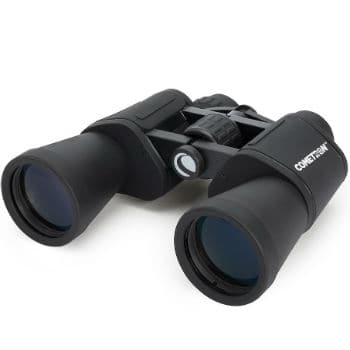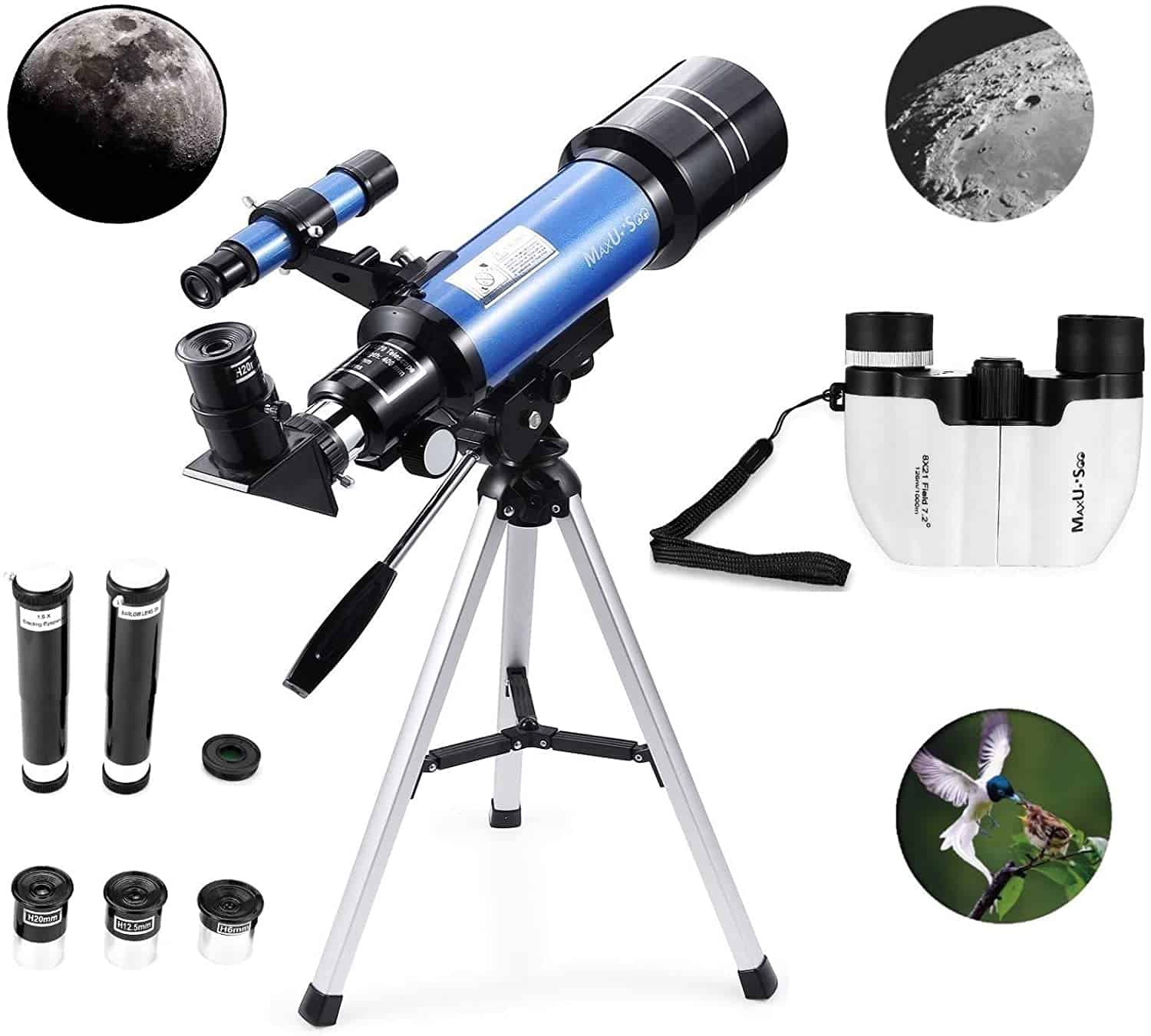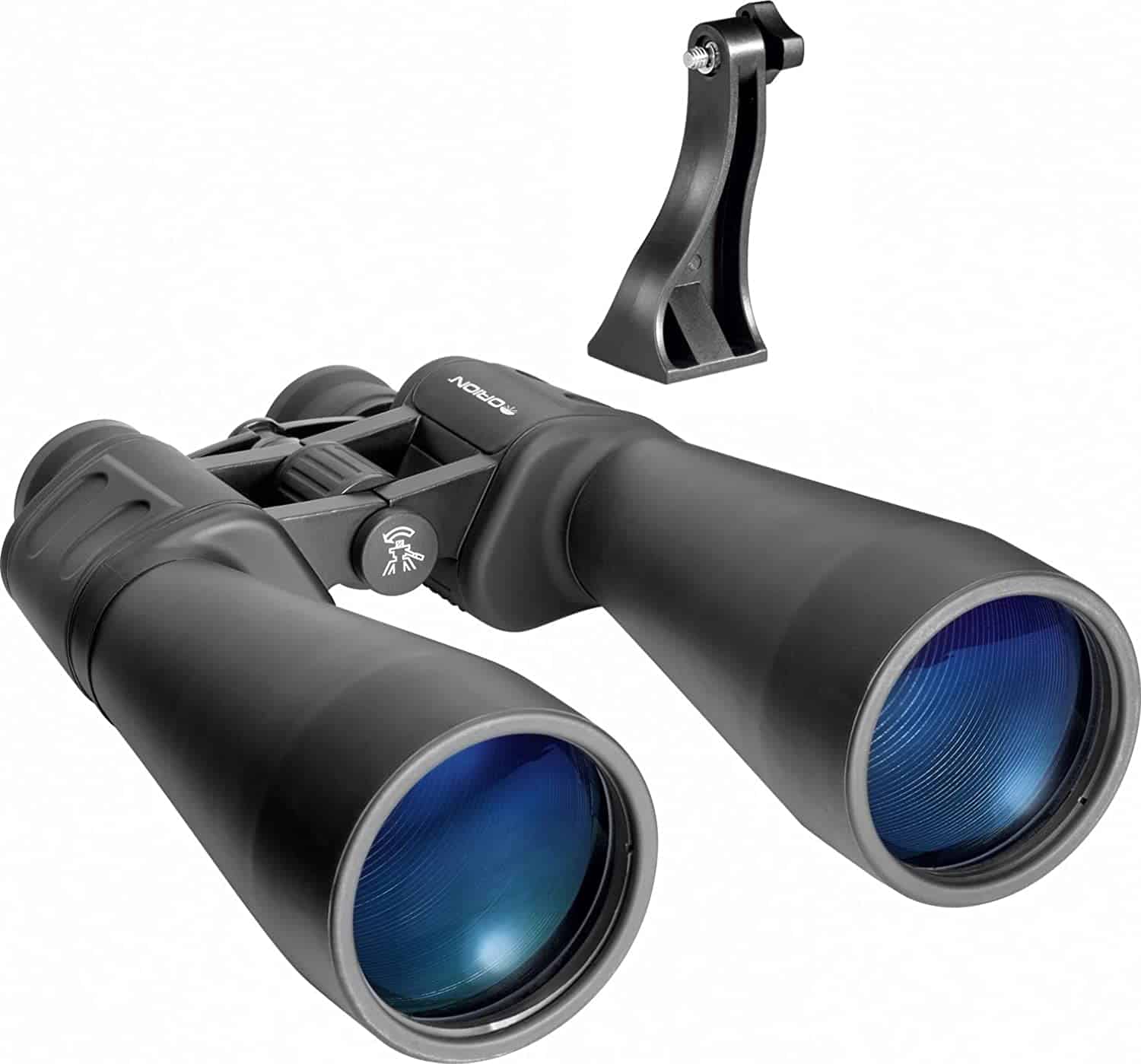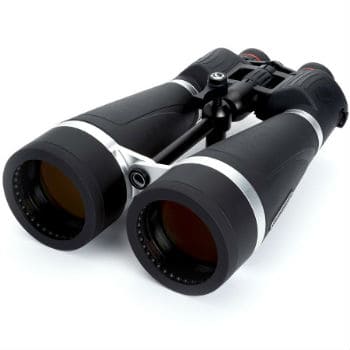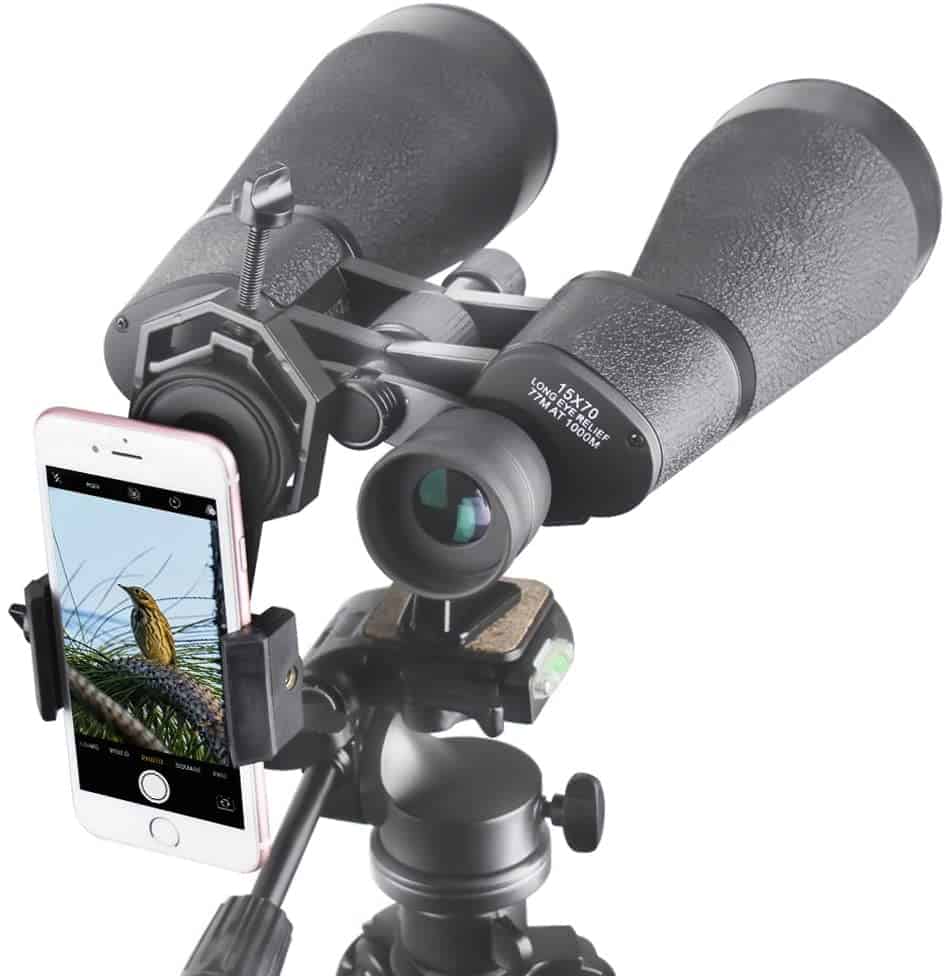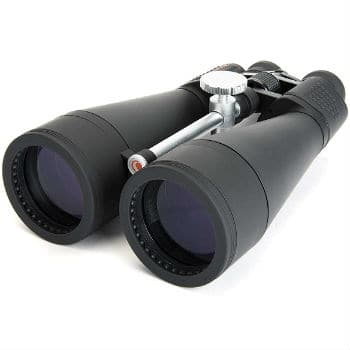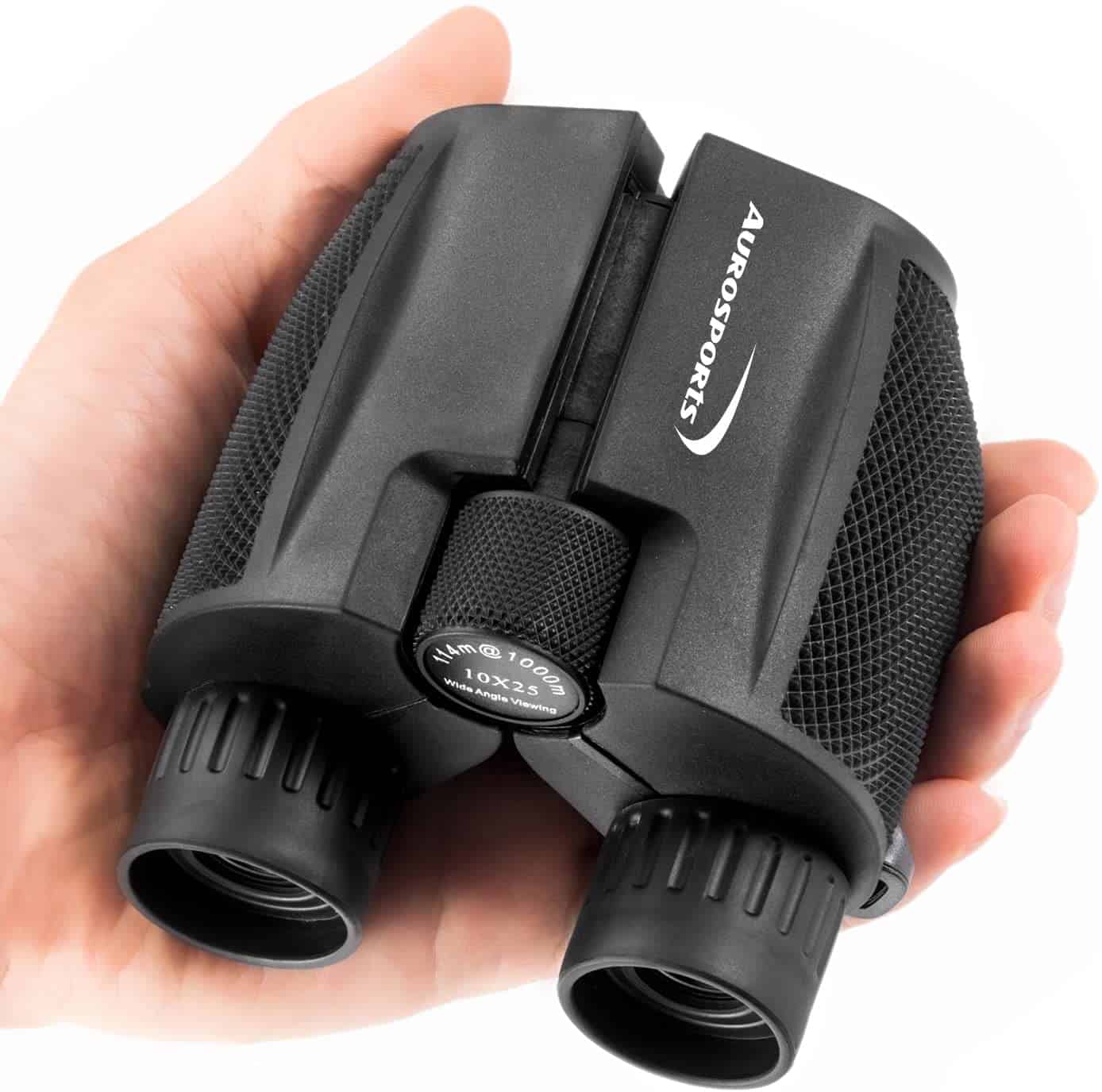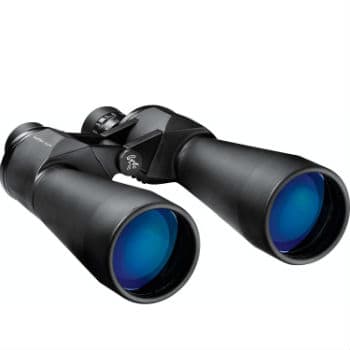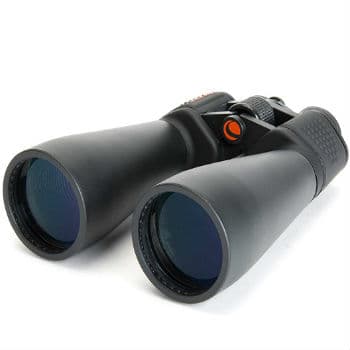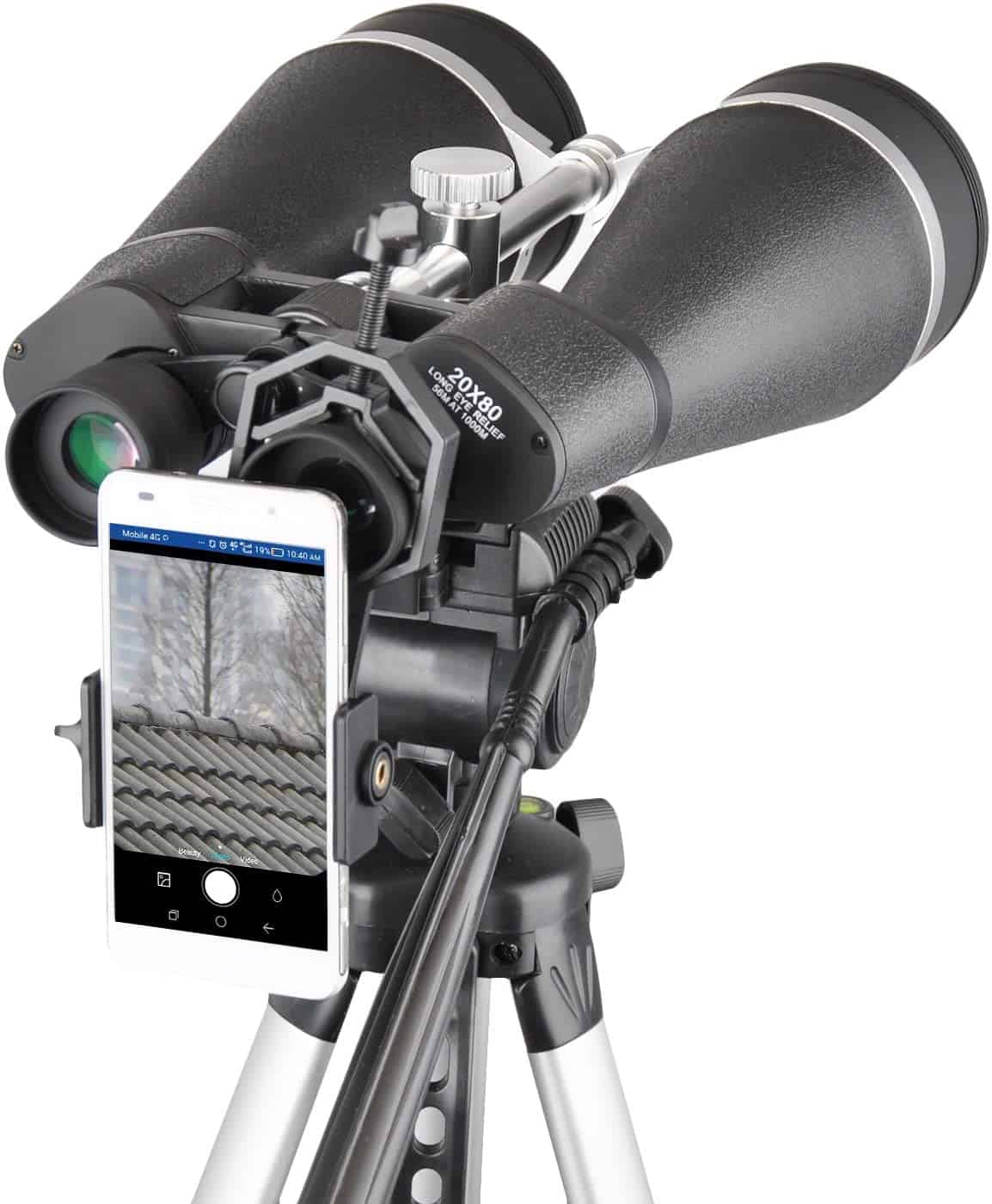Stargazing has always been one of the most mesmerizing and fun hobbies out there. The little beautiful stars and planets out in the sky can be both satisfying and extraordinary.
The objects that are many light-years distant from us get our attention and raise our curiosity. The desire to know about celestial and terrestrial objects pushes us to create tools and equipment that can satisfy our inquisitiveness.
Astronomy binoculars are a great tool to get you into star gazing more and more. These binoculars are perfect for youngsters and beginners as they are easy to use and require very little maintenance.
They are one of the easiest ways to explore more of the space from the comfort of your bedroom window and help you get engaged in this stimulating hobby.
Let's take a look at the Best Astronomy Binoculars for Beginners that have chosen for you along with a compact yet comprehensive buying guide!Our Overall #1 Rated Pick
One of the most efficient and impressive binoculars that work perfectly for beginners is Celestron 7×50 Binoculars. It has a 50mm objective lens, offering unlimited light into the eyepiece.
This makes it exemplary for astronomical use. With enhanced contrast and resolution, the aluminum housing, the binocular promises durability and strength. The multi-coated lens coating allows maximum light to enter.
The 10 Best Astronomy Binoculars Comparison Chart
Image | Product Name | Ranking | Price |
|---|---|---|---|
1 4.40 | |||
2 4.00 | |||
3 4.30 | |||
4 4.50 | |||
5 4.20 | |||
6 4.30 | |||
7 4.40 | |||
8 4.00 | |||
9 4.30 | |||
10 4.20 |
The 10 Best Astronomy Binoculars Out There
In this section, we review the Top 10 Astronomy Binoculars for Beginners.
One of the most efficient and impressive binoculars that work perfectly for beginners is Celestron 7×50 Binoculars. It has a 50mm objective lens, offering unlimited light into the eyepiece.
This makes it exemplary for astronomical use. With enhanced contrast and resolution, the aluminum housing, the binocular promises durability and strength. The multi-coated lens coating allows maximum light to enter.
With this Celestron binocular in hand, you can magnify the image up to 7x. Another plus point of using this binocular is that it is weather resistant. The neck strap and carrying bag make it portable and secure. If you love stargazing, your first choice should be Celestron Binocular.
PROS
CONS
Allow me to introduce you to another awesome binocular for beginners that offers magnification power up to 20x to 200x and comes with a 70mm objective lens. The multi-coated optics make it a great choice.
With three eyepieces (6mm,12.5mm,20mm), MaxUSee provides a wide range of views. The focal length of this binocular is 400mm, which is very favorable for a beginner and enhances the targeted object's image quality.
If you want a durable tripod along with a binocular, this telescope is perfect for you. Featuring a 3X Barlow lens, MaxUSee requires no tool for its assembling and is easy to carry.
PROS
CONS
The Orion 15×70 Astronomy Binoculars comes with a 70mm objective lens. Providing you a brighter, more transparent, and bigger image, Orion has 15x magnification power. Moreover, this binocular has internal baffles for a better image.
Another fascinating feature is that it includes multi-coated optics and helps the focus of light directly into the eyepiece. The telescope comes with a tripod L-adapter. Without costing you a lot of money, this binocular allows you to see Moons of Jupiter, craters in our Moon, Saturn rings, and other deep sky objects.
PROS
CONS
Are you looking for a binocular that satisfies your itch for stargazing without adding too much weight, adds durability, and is suitable for your pocket? Rated 4.5 out of 5 by customers, Celestron protects your eyes while you get lost in the blue sky.
This binocular works for both celestial and terrestrial viewing. The apparatus also has a detachable RSR rail, especially for attaching an optional red dot finderscope. With an objective lens of 80mm, Celestron provides you a sharper, brighter, and clearer image of the distant object even in low light.
Another great characteristic is that the apparatus is waterproof. It also brings portability and durability to your stargazing expedition.
PROS
CONS
Allow us to introduce you to a binocular that promises you the best stargazing experience of a lifetime. Gosky SkyView has an objective lens of 70mm. Handy, high-resolution images, compact, powerful eyepieces, tireless assemblage, and rated 4.2 by its loyal customers, Gosky urges you to get yourself ready to navigate the sky and find yourself lost in the shining, mysterious world.
The multi-coated optics and BaK-4 prism make the image clearer. The eyepieces give your image a crispier look, and you can magnify the image up to 15x. The rubber armor protection has the capacity to bear all types of weather conditions.
Weighing around 3 pounds, you can carry it wherever you want!
PROS
CONS
Another awe-inspiring and viable binocular presented by none other than Celestron is Celestron 20×80 SkyMaster Astronomy Binoculars. Being on the bucket list of most of the sky lovers, this binocular has left everyone out of the competition.
With an aperture of 80mm and magnification strength of about 20x, SkyMaster makes itself practicable for beginners. It features a BaK-4 prism and multi-coated optics for enhanced contrast and sharp image quality even in dim light.
The soft rubber eyecups make your experience unforgettable. Allowing celestial as well as terrestrial views, this telescope also provides a balanced structure and stray gleams for complete focus. It is also weather-resistant, which means that it can bear a little moisture on your binoculars. A win-win situation, right?
PROS
CONS
Aperture 25mm and a magnification strength of 10x- we are not talking about any other binocular other than AuroSports Binoculars for beginners as well as professionals. This binocular allows you to have a larger view of your targeted object up to 1000 yards.
The lens is fully coated, which makes the image brighter and clearer. Moreover, the waterproof quality of this binocular makes it usable in all environments.
AuroSports is compact and easy to carry for long distances. To make it more portable and ensure its safety, the apparatus comes along with a bag.
PROS
CONS
Are you a beginner and looking for a magical astronomical binocular that is easy on your wallet? We will be presenting you another Orion Binocular that allows you to change the way you used to look at the sky!
Orion 15×70 Astronomy Binoculars has a large aperture and a 70mm objective lens whose key function is to allow maximum light.
The apparatus is composed of BaK-4 prism and internal baffling that makes your object sharp and focused. Moreover, the cross-reinforced barrels with an aluminum rod provide a balanced optical alignment lacking in most binoculars in the industry.
The structural rigidity and optimum balance allow you to take the apparatus anywhere. Tempting, don't you agree? The terrestrial views can be magnified up to 15x. The presence of multi-coated optics focuses the light on the eyepieces and provides high-resolution images.
PROS
CONS
Most of the stargazers opt for night time for their new comet gazing expedition. Low and dim light is the primary factor that inhibits the process. Therefore, Celestron brings another astronomical binocular at your command.
Celestron 15×70 SkyMaster Binocular has a large aperture that is ideal for low light. The objective lens of 70mm is a source of image brightness and enhances the clarity in even long-range conditions. If you have this magical binocular in hand, you will have the privilege to magnify the object up to 15x.
The SkyMaster also brings you multi-coated optics and BaK-4 internal prism whose primary function is to give clearer, crisper, and better images. A dream come true, right?
Weighing 3.28 pounds, Celestron 15×70, has to be the best choice for the beginner at a low price.
PROS
CONS
Gosky Titan is a renowned astronomical brand for all the sky lovers out there. This astronomical binocular offers its services not only for celestial objects such as stars, comets, moon, planets, and clusters but also for terrestrial purposes, including birds, wildlife, and enchanting sceneries.
The framework is made up of aluminum polycarbonate that strengthens the structure and provides durability. You will also come across rubber armor whose primary role is to offer improved ergonomics security for your daily grind.
It comes up with a protective shield that protects the binoculars from dust and moisture. Moreover, it blocks stray light to help improve focus and generate high-resolution images. The fully coated multi optics helps produce crispier images.
PROS
CONS
Buying Guide
There are few things you need to consider before setting out to look for your perfect astronomy binoculars. The points discussed below will help you invest in a product that will satisfy your needs. So, without further ado, let's get started.
Magnifying Power
Magnifying power refers to the ability of the binoculars to zoom in on the object in the sky. Astronomy binoculars come in a variety of ranges of magnifying power. It is usually not a big issue as 10X is considered an excellent magnifying power for beginners.
This much magnifying power is ideal for when you will be looking at the moon and milky way. You will be able to see the mesmerizing clusters of stars clearly in all its glory as 10X will you see the full-wide field of view.
There are other binoculars as well that offer more magnifying power that ranges up to 20X. This range will help you to be able to look at more intricate details of the planets and also individual stars as it will allow you to zoom in more into the sky and other celestial bodies. With higher magnifying power, you will be able to zoom in to even view Orion nebula.
There are many open arguments about which magnifying range is better: low range magnifying power or high magnifying power. Each to their taste, everyone chooses whatever suits them best. Advisably, beginners must look for a low range magnifying power rather than a high range as it is easier to control. Once you've gotten used to low range, you can always move to a high range.
Prism
Just as telescopes use mirrors, binoculars use a prism to capture the light and project it to the eye for you to be able to see the sky and the stars and planets it holds. Prism is a small triangular glass component present in the binoculars that shuffle and manipulate the light.
Not only that, but prism also helps in magnifying the view by amplifying the light influx into the binoculars. Magnification is usually dependent on the length of the type, a phenomenon seen in telescopes.
Binoculars do not have the same tube size as a telescope but still, show a magnified image. This phenomenon is due to the prism.
Prisms have two standard types for binoculars, namely Porro Prism and Roof Prism.
Porro Prisms
Porro Prisms are the best type of prisms for high contrast images. These prisms focus and concentrate light so that it creates a highly clean and clear image with great details.
Porro prisms are the most accessible and used in rather expensive binoculars. Roof prisms are usually present in standard and waterproof binoculars. Roof prisms are not as sharp image yielding as Porro prisms, but these prisms are still right.
Roof Prisms
These roof prisms accommodate smaller gears and more protection from elements. Modern roof prisms can prevent light loss and help to develop a much brighter and clearer image than conventional roof prisms.
Aperture
Aperture is the opening at the front end of the binoculars to let the light flow in. Larger aperture ensures maximum light influx into the binoculars to allow a bright image to appear. The idea of the aperture is the same as that of cameras and telescopes.
A larger aperture will allow for more light to enter, which will allow you to see a much brighter image that is clear to the eye. So, the larger the aperture, the better. The same idea applies to the objective lens.
The objective lens is the lens present on end closest to the specimen and works by collecting light from the specimen and focusing it on the prisms in the binoculars. The objective lens is also made larger to ensure that maximum light enters and produces a brighter image.
Objective lens size is mentioned in its specification and visualized on the binocular package itself too. The measurement of the lens is usually in millimeters and typically ranges from 30 to 50 millimeters.
Eyepiece
The eyepiece is present at the rear end of the binoculars, and that is where you place your eyes to see the image. The eyepiece features exit pupils. These are small openings at the rear end eyepiece that will focus the light from the prisms and project them into the viewer's eye.
Exit pupils are present at the opposite end of the objective lens and function by focusing on the light. Exit pupils are uniquely the same size as that of the eye pupil. The average human pupil size is around 5 to 9 millimeters.
The exit pupils are of the same size as pupils, so the light coming from the aperture and then from the prisms is focused right into the eye without losing any light. A good light influx will help to generate a much brighter and clearer image for you to see. For instance, if exit pupils are made smaller, they will lose much of the light coming in from the front end and will form a much darker image.
Eye relief
Eye relief is the distance between the image formed in the binoculars and the last lens of the eyepiece at the rear end. Ideally, this distance should be adjustable as this needs to be adjusted and vary from person to person.
People who wear prescription glasses will need to do some additional research as their focal points will be in different areas than non-eye glass wearers. It is generally better to look for astronomy binoculars with notably longer eye relief, especially for people with compromised eye sights.
Overall, adjustable eyecups are a plus. With this feature, you will be able to decide exactly at what point do you think the image is bright enough or what clarity of image do you prefer.
Focus and Diopter Knob
Maintaining focus is a struggle that all stargazers are very much familiar with. While on telescopes on a tripod, losing focus is not one of the main issues. But when you have the tool right in your hand, losing focus is imminent.
You need to look for a binocular pair that offers a focusing system, ideally a rather simple one. Shifting and readjusting focus can be tiresome again and again, and quite frankly, nobody wants that. Having an easy and straightforward focus system will make your stargazing experience more amazing than it already is.
Most astronomy binoculars have a knob right between both eyes to move the eyecup back and forth, shifting the point of focus to a brighter and sharper image. Some pairs do have a built-in stabilizing system, such as liquid-filled prisms. If you're up for it, there are many stabilizing accessories out there for binoculars to help maintain the focus.
A few expensive pairs of binoculars feature an extra knob, usually on the right eyepiece. This knob helps to maintain a clearer image despite the presence of different refractive power of both eyes or on one of the eyes.
Some people tend to have different refractive power in one eye than that of the other. This varying power of the eyes can be an issue when looking into the binoculars as this device will focus the light at one point in both eyes. A Diopter knob helps by allowing the viewer to vary the eyepiece's length so that each eye can see a brighter and sharper image.
Body and Built
Enough about the lens and the function, let's talk about the ergonomic feel of the binoculars. The built and the body of the binoculars is just as crucial as its inner system. You need to look for a sturdy frame as binoculars are hand-held devices, and people like to take it outside.
A more substantial body will ensure the durability of the inner system of the binoculars. All types of shapes and materials are available, but the metal body with treated glass is always preferred. This material will ensure that the product will be with you for a long time, even if you drop it a few times.
We know the prism types now; these different types feature different shapes of binoculars. Astronomy binoculars featuring Porro Prisms have a more bulky, H-shaped body. But, binoculars with roof prisms have a more compact and lighter body.
Binoculars also feature a few additional features that mostly depend on the use of the binoculars. For instance, some binoculars are waterproof. Over time, water vapors in the air can start to accumulate or condense in your binoculars, rendering it useless.
If you are stargazing closer to water, definitely look for waterproof binoculars in case you drop them in water or just to prevent humidity in the air from condensing in the binoculars. Most binoculars now also feature rubber clads to provide shock resistance if you drop it on the floor.
If you want to immobilize your binoculars, look for a body with a tripod adapter. Articulated parallelograms are considered the best due to their smooth movements allowing a wide variety of angles. These stands are rather expensive but worth it if more than one person will be looking through them.
FAQs
What will I see with binoculars?
There is a misconception that binoculars will help you see only stars. That is simply not true. With the right pair, you can see the little details of the moon, planets, asteroids, and even stars. Astronomy binoculars allow you to take a peek into space and see the world in a better light.
Do binoculars need regular maintenance?
Binoculars do not require as much maintenance as that of the telescope. They do require gentle cleaning seldom.
What is the difference between Porro and roof prisms?
Roof prism system diverges the light in an inverted V shape, much like that of a roof of a house. Due to this divergence, the body of roof prism binoculars is compact and slimline. On the other hand, Porro prisms have more of a bulky and H-shaped built. The objective lens and the eyepiece counterpoise each other, and light tends to diverge at the right angle way; hence, the shape.
Can all binoculars be used during the day and at night?
There are universal binoculars out there. But not all binoculars can be used both during the day and at night. Advisably, look for adjustable aperture sizes to control the light influx during the day and at night.
Final Words
The sky and the space are full of mesmerizing sights waiting for you to see and explore. There are thousands of stars, asteroids, planets out there in space, each beholding a unique and different type of beauty.
We weren't able to see all these intricate and delicate sights before, but with new advancements and technology, anyone can just take a set of binoculars and look into the sky and see outside this earth. It is only fair that you find the right tool for yourself that makes your experience more memorable and fun. Getting the best astronomy binoculars for beginners will enhance your experience and inspire you to see the night sky with more understanding.
Happy stargazing!

